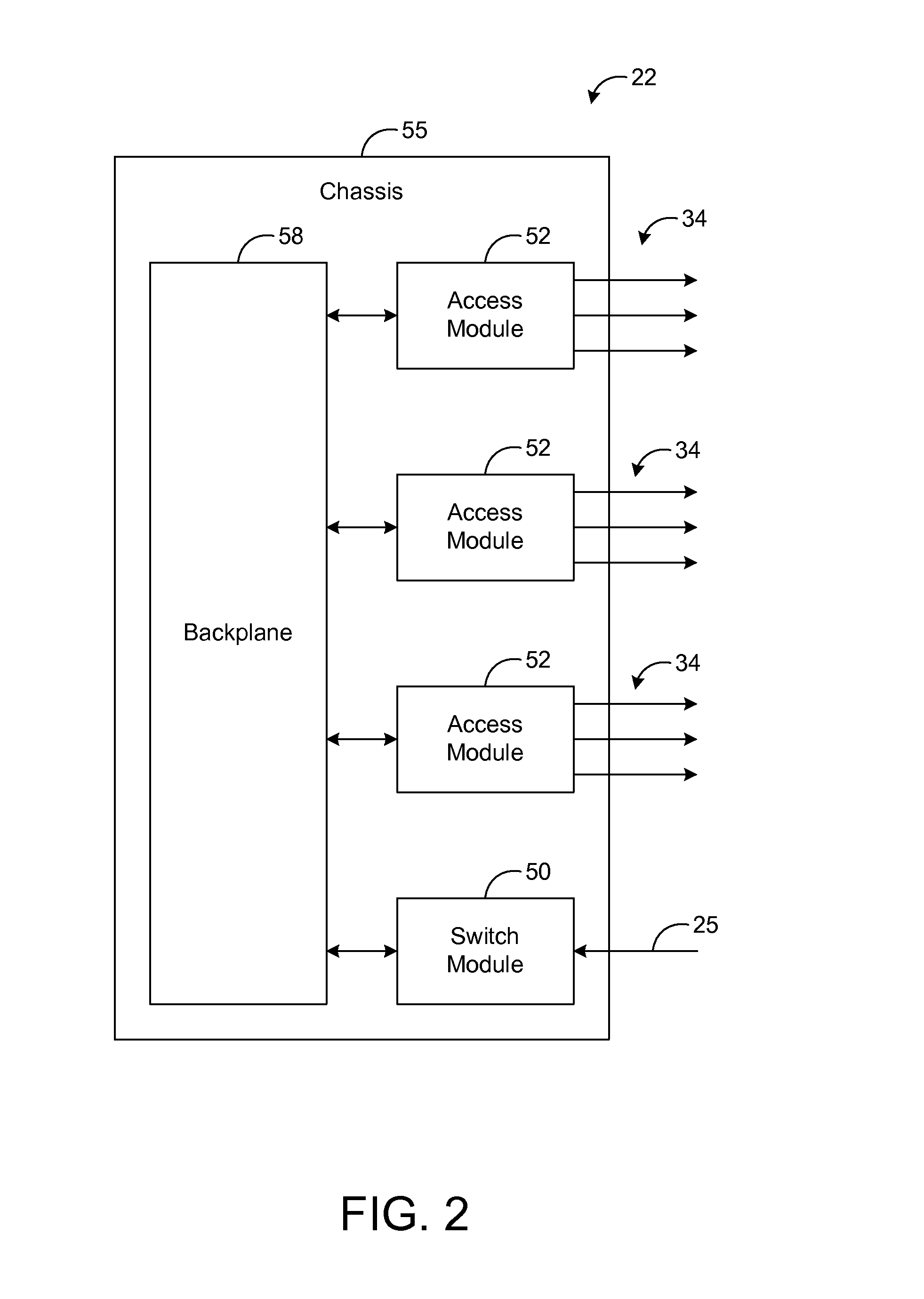Systems and methods for allocating network bandwidth across access modules
a technology of access modules and network bandwidth, applied in the field of system and method for allocating network bandwidth across access modules, can solve the problems of difficult design and implementation, congestion, and excess of requested traffic or “load” capacity of the network
- Summary
- Abstract
- Description
- Claims
- Application Information
AI Technical Summary
Benefits of technology
Problems solved by technology
Method used
Image
Examples
Embodiment Construction
[0014]The present disclosure generally pertains to telecommunication systems that use a dynamic bandwidth allocation (DBA) algorithm based on current load conditions for controlling transmissions to a plurality of access modules of an access node in order to achieve a fair allocation of network bandwidth at the access node. In one exemplary embodiment, access modules at an access node communicate via a control channel with dynamic bandwidth allocation (DBA) logic that receives load information from each of the access modules. Using such load information, the DBA logic dynamically controls the upstream data rates so that a fair allocation of network bandwidth is achieved across all of the access modules. Specifically, the data rates are controlled such that packet flows for services of the same class achieve the same or similar performance (e.g., average data rate) regardless of which access module is receiving each respective packet flow.
[0015]FIG. 1 depicts an exemplary embodiment ...
PUM
 Login to View More
Login to View More Abstract
Description
Claims
Application Information
 Login to View More
Login to View More - R&D
- Intellectual Property
- Life Sciences
- Materials
- Tech Scout
- Unparalleled Data Quality
- Higher Quality Content
- 60% Fewer Hallucinations
Browse by: Latest US Patents, China's latest patents, Technical Efficacy Thesaurus, Application Domain, Technology Topic, Popular Technical Reports.
© 2025 PatSnap. All rights reserved.Legal|Privacy policy|Modern Slavery Act Transparency Statement|Sitemap|About US| Contact US: help@patsnap.com



